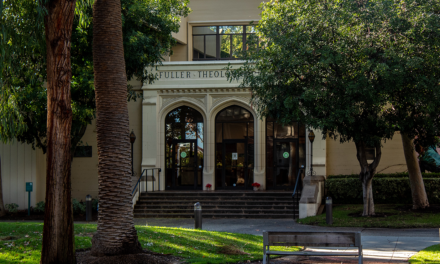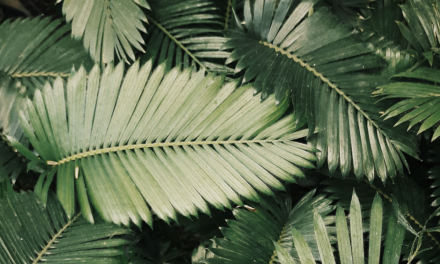I’ve amassed a collection of houseplants in the Zone 9 area of Sacramento that now spreads to every room. ZZ plants, monsteras, spider plants and more — they’re tucked in every lighted space.
It started as a hobby, and now borders obsession — there are many reasons to have houseplants.
These are my current 50 houseplants (33 plant species):
- Sansevieria Robusta / Sansevieria Futura Superba / Sansevieria Trifasciata (Snake Plant) — I keep two of these on top of the kitchen’s fridge since they still do well in low light, a Sansevieria Robusta and Sansevieria Futura Superba. I love the Robusta variation of snake plant due to it’s upright, clumping growing structure. I also keep a third, tall Sansevieria Trifasciata in the living room — as snake plants help to purify the air.
- Dracaena Sanderiana (Lucky Bamboo) — These sit in water on the dining room table. I’ve had this particular set of two bamboos for over eighteen years, initially purchasing them in Santa Cruz. They’re slightly yellowed over time, but hoping they continue to last a bit longer.
- Epipremnum Aureum (Devil’s Ivy or Pothos Plant) — A larger trailing pothos plant sits in the kitchen, and clippings are also in the living room and trailing out of the aquarium. I love the pothos due to its low-light success.
- Chlorophytum Comosum (Spider Plant or Airplant) — I’ve loved spider plants my whole life, ever since I visited my friend’s house who had them spread out everywhere. This larger spider plant was originally struggling, but I put it out on the front porch during the summer and it finally grew many hanging babies. It’s now in the corner in the kitchen perched below the fiddle-leaf fig. I also have an additional, small spider plant that sits on the living room houseplant shelf next to our largest, West-facing window.
- Ficus Lyrata (Fiddle-Leaf Fig) — We have this tall seven-foot fiddle-leaf fig planted in the kitchen with a smaller, secondary fiddle-leaf fig planted in the same pot.
- Aglaonema (“Silver Bay” Chinese Evergreen) — Moving to the living room and office area, a “Silver Bay” Chinese Evergreen sits next to my desk behind the printer. I love how well this houseplant continues to grow despite low light conditions in the area it sits.
- Zamioculcas (ZZ Plant or Zanzibar Gem) — Two ZZ plants are kept near the TV and aquarium, with a small one on a shelf and a tall, two-foot ZZ plant in a large pot. I love the long shoots of the ZZ plant with exotic leaf shapes. They also do well in low light, so are easy to use as decoration in the house — with the ability to be placed pretty much anywhere.
- Platycerium (Staghorn Fern) — A staghorn fern hangs on the entrance sitting bench, although I should find a place for it with slightly more light. It’s lost a few smaller leaves, but it’s more substantial leaves have grown larger and healthier. They have a fun, unusual look.
- Polyscias Scutellaria (Fabian Aralia Stump) — With it’s large, dinner-plate leaves, this interesting looking plant is one of my favorites. I try and remember to mist it daily, otherwise, it’s leaves try and dry out during the winter months when the heater is running and humidity indoors decreases.
- Philodendron Hederaceum (Heartleaf Philodendron) — The heart-shaped leaves of this plant make it striking, along with its bold, dark-green color. The leaves will continue to grow longer and vine towards light.
- Stromanthe Sanguinea (Stromanthe Sanguinea) — Beautiful purple and green leaves with the red coming in velvety. I find this plant does best when sitting in a reasonable amount of sun closest to the window.
- Monstera Adansonii (Swiss Cheese Plant or Adanson’s Monstera) — Maybe the monstera type with the most holes, this vining monstera is delicate and gorgeous. Living in Sacramento in zone 9, I often keep the windows open with the house staying pretty warm during the summer, which I think the monstera adansonii likes, along with misting for moistness.
- Hedera Helix (English Ivy) — I have a small “Gold Child” variation of English ivy and a large trailing pot of common English ivy. If placed near a suitable amount of light, it will grow wildly.
- Aloe Vera — One aloe vera clipping from my mother sits on my living room houseplant shelf.
- Asplenium Nidus (Bird’s Nest Fern “Green Flame”) — The vibrant color of green on this fern is charming. It benefits from staying moist and can also survive in lower-light conditions.
- Schefflera Arboricola (Hawaiian Schefflera) — Showy groups of leaves that display like umbrellas. This plant will add a tropical touch to any collection of housesplants.
- Tradescantia Pallida (Purple Heart Tradescantia) — Vining plant with beautiful purple coloring. We received a clipping of this plant from Barrett’s grandmother.
- Philodendron Bipennifolium (Horsehead Philodendron or Fiddle-Leaf Philodendron) — This little guy has now bloomed into six separate leaves but originally grew from a small clipping out of the base of another plant that arrived in the mail.
- Pellaea Rotundifolia (Button Fern) — The deep green coloring and button-shaped leaves of plant make it a truly delightful fern. Benefits from misting to keep it at higher humidity, otherwise the button leaves will dry off.
- Dracaena Marginata (Madagascar Dragon Tree) — This plant was mailed originally and started very small, but I’ve been surprised to see how rapidly it has grown considerably over one year, even with little light.
- Pilea Peperomioides (Chinese Money Plant) — Another mailed plant, but arrived so small it hasn’t done super well since it joined the houseplant family. I’m hoping it has a prosperous future.
- Ficus Benjamina (“Wintergreen” Weeping Ficus Fig) — I keep this plant closest to the window to give it maximum sun, and it’s continued to grow sets of new leaves periodically throughout the years.
- Codiaeum Variegatum (Garden Croton) — Not everyone is impressed with the croton plant, but I love that if you give them enough light, they’ll push out beautiful green leaves that will eventually turn their beautiful shades of red and yellow.
- Peperomia Ginny (Radiator Plants) — This particular plant has stayed about the same size since I received it, but I continue to give it love, and enjoy it’s light-green color with red-blushed edges.
- Monstera Deliciosa (Swiss Cheese Plant) — This particular plant is probably the crowning jewel of my collection, as it came directly from West Palm Beach and has borne a bountiful number of unfurled leaves. It continues to grow larger and larger, and we keep it close to the window for adequate light. Misting often throughout the week keeps it inspired to release new leaves continually.
- Spathiphyllum (Peace Lily) — I have two peace lily plants, a baby plant and a large potted version that sits on the ground on rollers. I love these plants due to their low-light ability, but they’ll produce beautiful white flowers when placed near more light.
- Nephrolepis Exaltata (Boston Fern or Sword Fern) — Barrett is particularly fond of the Boston fern. It’s long, showy fern tendrils fall gracefully towards the floor, and give off a gorgeous green.
- Maranta Leuconeura (Prayer Plant) — Rising up and down and moving daily, the prayer plant is one of my favorites. I keep this particular plant close to the window for lots of light, and it continues to vine out, allowing me to grab clippings to give to others as gifts. I also love the particular green and purple displayed on the prayer plant.
- Tradescantia Zebrina (Wandering Jew or Inchplant) — I’ve cut this plant back many times, and it continues to grow back quickly. A beautiful, bushy plant with beautiful, deep purple, green and silver-shimmery colors.
- Chamaedorea Elegans (Parlor Palm) — A bushy little parlor palm is kept on the shelf in the bedroom, and I mist it throughout the week to keep it moist. I love the deep, dark green of the parlor palm.
- Columnea Gloriosa (“Black Gold” Goldfish Plant) — The leaves on this plant are shiny and look like rubber, and have cute little orange “goldfish” flowers that display when the plant receives enough sun.
- Dypsis Lutescens (Areca Palm) — I’ve had this areca palm for a few years and continue to keep it misted and leaf tips trimmed for health and beauty.
- Radermachera Sinica (China Doll) — A bushy plant that does well when placed near the window and misted regularly, although Barrett thinks it merely looks like a tomato bush.
Houseplant Tracking Spreadsheet (Excel)
After keeping houseplants for some time, I found I needed a way to keep track of the various houseplants in each area of the house. Above you’ll find the download link for the houseplant tracking spreadsheet I put together in Microsoft Excel — with columns for each houseplant identifying:
- Common Name / Nickname
- Scientific Name
- Quantity
- Location
- Lighting
- Water
- Misting
- Date Acquired
- Date Last Fertilized
Use the spreadsheet to list out your plants, room by room, and enjoy the process of documenting your beloved houseplants.
What can I plant now in zone 9 and what are the best plants for zone 9?
The great part about living in zone 9 in Sacramento is that there is almost always something that can be planted, no matter the time of the year.
Now that it’s December, it’s always a fun time to start armchair gardening and deciding on what you’ll plant. I often get started on my garden here in zone 9 Sacramento in March and keep flower seeds in the fridge a bit earlier to start inspiring their breakout conditions.
Use the list of vegetables below to start planting the selection depending on the current month:
February
Beets
Carrots
Cauliflower
Collards
Cucumbers
Eggplant
Endive
Kale
Leeks
Onions
Parsley
Peas
Radishes
Turnips
March
Beans
Beets
Cantaloupe
Carrots
Celery
Collards
Corn
Cucumbers
Eggplant
Endive
Kohlrabi
Leeks
Lettuce
Okra
Onions
Parsley
Peas
Peppers
Potatoes (white & sweet)
Pumpkins
Radishes
Summer Squash
Tomatoes
Turnips
Watermelon
April
Beans
Cantaloupe
Celery
Collards
Corn
Cucumbers
Eggplant
Okra
Sweet Potatoes
Pumpkins
Summer Squash
Turnips
Watermelon
May
Beans
Eggplant
Okra
Peas
Sweet Potatoes
June
Beans
Eggplant
Okra
Peas
Sweet Potatoes
July
Beans
Eggplant
Okra
Peas
Watermelon
August
Beans
Broccoli
Cauliflower
Collards
Corn
Cucumbers
Onions
Peas
Peppers
Pumpkin
Summer Squash
Winter Squash
Tomatoes
Turnips
Watermelon
September
Beans
Beets
Broccoli
Brussels Sprouts
Carrots
Cucumbers
Endive
Kale
Kohlrabi
Leeks
Lettuce
Onions
Parsley
Radishes
Squash
Tomatoes
Turnips
October
Beans
Broccoli
Brussels Sprouts
Cabbage
Carrots
Collards
Kale
Kohlrabi
Leeks
Onions
Parsley
Radishes
Spinach
November
Beets
Broccoli
Brussels Sprouts
Cabbage
Carrots
Collards
Kale
Kohlrabi
Leeks
Onions
Parsley
Radishes
Spinach
December
Beets
Broccoli
Cabbage
Carrots
Collards
Kohlrabi
Onions
Parsley
Radishes
Give Your Garden Enough Sun
As always, don’t underestimate the amount of sun needed for your garden, especially when trying to grow vegetables in zone 9 during the winter months. Be sure to plant your garden in an open source where it will get at least eight hours of sun daily.





